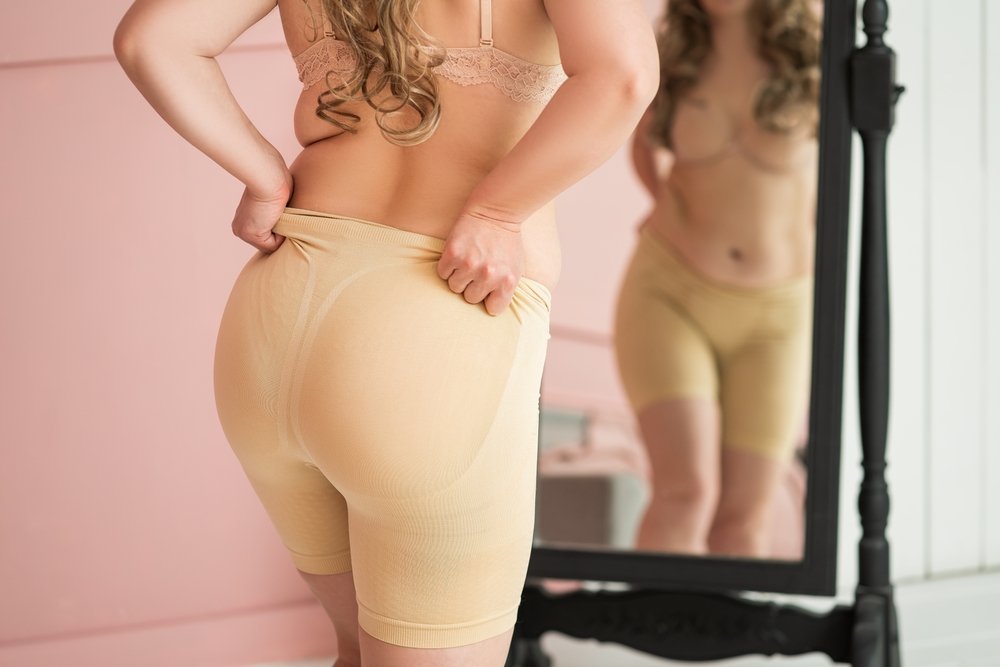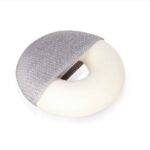The duration for wearing a faja (compression garment) after a Brazilian Butt Lift (BBL) varies based on your surgeon’s recommendations and individual healing progress. Typically, it is advised to wear the faja continuously for about 4-8 weeks after the surgery, gradually transitioning to shorter periods or specific activities.
This gradual adjustment allows your body to adapt to the new shape and contours while still providing support and compression. To determine “when can I stop wearing my faja after BBL,” it is crucial to follow your surgeon’s guidance for personalized advice tailored to your recovery progress. Consulting with your surgeon ensures optimal healing and results.
Timing plays a crucial role in maximizing your results
Timing plays a crucial role in maximizing your results after a Brazilian Butt Lift (BBL) surgery. It is important to follow your surgeon’s recommendations regarding the duration of wearing the faja (compression garment).
Typically, surgeons advise wearing the faja continuously for the first few weeks after surgery. This initial phase allows for proper healing, reduces swelling, and helps maintain the desired shape and contour of the buttocks. During this time, the faja provides support, compression, and stability to the surgical area, optimizing your results.
After the initial phase, your surgeon may advise gradually reducing the hours of faja wear or transitioning to wearing it only during certain activities. This allows your body to adjust to the new contours while still providing support and shaping.
Follow your surgeon’s guidance for the ideal duration
Following your surgeon’s guidance regarding the ideal duration of wearing a stage 2 faja is crucial for optimal recovery after a Brazilian Butt Lift (BBL). While the specific duration may vary based on individual factors, your surgeon will provide personalized instructions on how long to wear the stage 2 faja.

By adhering to their guidance, you can promote proper healing, maintain the desired results of the BBL, and ensure the best possible outcome. Remember to consult with your surgeon for their expert advice on the duration of wearing the stage 2 faja to support your recovery journey effectively.
Signs that indicate it’s time to stop wearing your faja after BBL
While it is important to follow your surgeon’s specific instructions regarding when to stop wearing your faja (compression garment) after a Brazilian Butt Lift (BBL), there are certain signs that may indicate it’s time to consider discontinuing its use. These signs can vary among individuals but may include:
- Minimal swelling: As your body heals, you may notice a significant reduction in swelling around the treated areas. If the swelling has subsided and remains minimal, it could be an indication that you are approaching the end of the recommended faja usage period.
- Comfortable without the faja: If you find that you can comfortably go about your daily activities without wearing the faja and still maintain the desired shape and contour, it may suggest that your body has adjusted well and no longer requires the constant compression.
- Stable results: If your desired results have been achieved and have stabilized, meaning that your buttocks have settled into their final shape and contour, it may indicate that you no longer need the faja for additional support or shaping.
- Consultation with your surgeon: Ultimately, the decision to stop wearing the faja should be made in consultation with your surgeon. They will assess your progress, examine your healing, and provide personalized recommendations based on their expertise and experience.
Remember, each person’s healing process is unique, and the duration of faja usage can vary. It’s crucial to communicate with your surgeon and seek their guidance to determine the most appropriate time to stop wearing the faja after your BBL surgery.
Achieving desired shape and contour
Wearing a faja (compression garment) after a Brazilian Butt Lift (BBL) surgery plays a crucial role in achieving the desired shape and contour of your buttocks. Here’s how it works:
- Compression and support: The faja provides firm compression and support to the treated areas, including the buttocks, hips, and lower back. This compression helps to reduce swelling, minimize fluid retention, and promote proper healing. By keeping the surgical site compact and supported, the faja assists in shaping and contouring the buttocks to achieve the desired outcome.
- Maintaining surgical results: After a BBL, the newly transferred fat needs to establish a blood supply and integrate into the existing tissues. Wearing a faja helps to stabilize the fat grafts, ensuring they settle and adhere to the underlying structures. The consistent pressure from the faja helps to maintain the desired shape and contour by preventing excessive movement or displacement of the fat cells.
- Scar management: Along with shaping and contouring, the faja can help manage the appearance of scars. By providing compression and support, it can help minimize scar tissue formation and improve the overall appearance of the surgical incisions.
- Long-term support: Even after the initial healing period, wearing a faja during daily activities or exercise can provide long-term support to the buttocks. It can help prevent sagging, maintain the shape achieved through the BBL, and enhance the longevity of the results.
Remember, the effectiveness of the faja in achieving your desired shape and contour will depend on factors such as the quality of the garment, proper fit, and adherence to your surgeon’s recommendations.
Benefits of wearing your faja for the recommended duration after BBL
Wearing your faja (compression garment) for the recommended duration after a Brazilian Butt Lift (BBL) offers several benefits that contribute to a successful recovery and enhanced results:
| Benefits of Wearing Faja for Recommended Duration after BBL |
|---|
| Optimal shaping and contouring of the buttocks |
| Reduction of swelling and fluid retention |
| Enhanced healing and improved skin retraction |
| Protection and stabilization of newly transferred fat cells |
| Increased comfort and confidence during daily activities |
Please note that the benefits mentioned are general and may vary depending on individual circumstances. It is important to consult with your surgeon for personalized advice regarding the recommended duration of wearing a faja after your BBL surgery.
How to transition out of wearing your faja after BBL
Transitioning out of wearing your faja (compression garment) after a Brazilian Butt Lift (BBL) requires a gradual approach to allow your body to adapt to its new contours. Here are some steps to help you transition effectively:
- Consult with your surgeon: Before making any changes to your faja usage, consult with your surgeon. They will evaluate your healing progress and provide personalized recommendations on when and how to transition out of wearing the faja.
- Gradually reduce wearing time: Start by gradually reducing the number of hours you wear the faja each day. For example, if you were wearing it for the majority of the day, you can gradually decrease it to wearing it for only half the day or during specific activities.
- Observe your body’s response: Pay attention to how your body responds as you reduce the faja wearing time. Note any changes in swelling, discomfort, or the appearance of your buttocks. If you notice any issues, consult with your surgeon for further guidance.
- Monitor stability of results: Keep an eye on the stability of your results as you decrease faja usage. If you notice that your buttocks maintain the desired shape and contour without the faja, it may be an indication that you are ready to further reduce or discontinue its use.
- Stay active and maintain a healthy lifestyle: Engage in regular exercise and follow a balanced diet to support your body’s natural healing process and maintain the results achieved from your BBL surgery.
Remember, the transition process may vary for each individual, and it is crucial to follow your surgeon’s guidance. They will assess your progress, monitor the stability of your results, and provide specific recommendations tailored to your unique situation.

Incorporating regular exercise and healthy habits
Incorporating regular exercise and healthy habits into your post-Brazilian Butt Lift (BBL) routine can greatly contribute to your overall well-being and help maintain the results achieved from the surgery. Here are some ways to do so:
| Incorporating Regular Exercise and Healthy Habits after BBL |
|---|
| Start gradually with low-impact exercises |
| Focus on cardiovascular activities for overall fitness |
| Incorporate strength training exercises for muscle tone |
| Target glute-specific exercises for buttock enhancement |
| Maintain a balanced diet with fruits, vegetables, and lean proteins |
| Stay hydrated by drinking an adequate amount of water |
| Prioritize rest and recovery for optimal muscle repair |
| Consult with your surgeon before starting an exercise program |
Consult with your surgeon before making any changes
Incorporating regular exercise and healthy habits into your post-Brazilian Butt Lift (BBL) routine is crucial for maintaining your results and overall well-being. Here are some tips to help you achieve this:
- Consult with your surgeon: Before starting any exercise or making significant changes to your routine, consult with your surgeon. They can provide personalized recommendations based on your healing progress and individual needs.
- Start gradually: Begin with low-impact exercises, such as walking or light stretching, and gradually increase the intensity and duration over time. This approach allows your body to adjust and minimize the risk of strain or injury.
- Focus on cardiovascular exercises: Engage in activities that elevate your heart rate and improve cardiovascular fitness, such as brisk walking, cycling, swimming, or dancing. Aim for at least 150 minutes of moderate-intensity cardio exercise per week.
- Incorporate strength training: Include exercises that target various muscle groups, including the glutes, legs, and core. Squats, lunges, hip thrusts, and bridges are effective for strengthening and toning the buttock area.
- Maintain a balanced diet: Eat a well-rounded diet that includes plenty of fruits, vegetables, lean proteins, whole grains, and healthy fats. Fuel your body with nutrient-dense foods to support overall health and provide energy for your workouts.
- Stay hydrated: Drink an adequate amount of water throughout the day to stay hydrated. Water helps maintain proper bodily functions and supports muscle recovery.
- Prioritize rest and recovery: Allow your body sufficient time to rest and recover between workouts. This includes getting enough sleep, incorporating rest days into your exercise routine, and listening to your body’s signals to avoid overexertion.
Remember, it’s essential to listen to your body, follow your surgeon’s recommendations, and make modifications as needed. Everyone’s healing process is different, so it’s important to tailor your exercise routine and habits to your individual needs.
References:
- RealSelf. (n.d.). How long do I have to wear my faja after a BBL and Lipo? Retrieved from RealSelf
- Halt My Swelling. (n.d.). How Long Do I Have to Wear My Faja 24/7? Retrieved from Halt My Swelling






